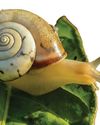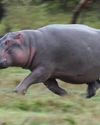
Two nations that lead in this direction through individual mobility choices of their citizens are the Netherlands and Denmark in terms of percentage of urban trips, whereas China and Japan lead in terms of total trips. It is said to be a smart urban policy for developing countries like India and China, where much of the infrastructure is yet to be developed, to build cities for cycling that would lead to cleaner air and safer streets (The Institute for Transportation and Development Policy, New York).
Bicycle history
Though there are conjectures and stories tracing the initial ideation of the bicycle to Leonardo Da Vinci or his followers, recorded history finds a patented machine that can truly be claimed to be a forerunner of the present-day bicycle in the Laufmaschine (running machine) of 1817, patented in 1818. It was designed by Baron Karl von Drais, a civil servant of Baden in Germany, after whom it was also called Draisine. It is assumed that in England the starvation death of horses due to crop failure in 1816 prompted him to find a mobility substitute for horses. It had a wooden structure and iron wheels and moved by foot-pushing. By 1819, it had become the craze of London with a more ergonomic design. In 1853, Philip Moritz Fischer of Schweinfurt, Bavaria, introduced a pedal to his bicycle. However, it was Pierre Lallemont who holds a patent for the first pedalled bicycle in 1863 in the U.S. The late 1860s saw the addition of solid-rubber tyres, which gradually changed its status as ‘boneshaker’. Further adaptations and mass production in England and New England led to the bicycle becoming a popular machine, but still affordable only to the upper class. The other major developments on the bicycle were the introduction of a rear wheel chain drive in the 1880s and pneumatic tyres (John Dunlop) in 1888.
This story is from the {{IssueName}} edition of {{MagazineName}}.
Start your 7-day Magzter GOLD free trial to access thousands of curated premium stories, and 9,000+ magazines and newspapers.
Already a subscriber ? Sign In
This story is from the {{IssueName}} edition of {{MagazineName}}.
Start your 7-day Magzter GOLD free trial to access thousands of curated premium stories, and 9,000+ magazines and newspapers.
Already a subscriber? Sign In

STICKING OUT YOUR NECK!
Maybe it's having the twins, my grandsons from New York, back home again, that reminded me of a conversation I had with them a couple of monsoons ago: \"What's that?\" asked one of them pointing to a huge shell on the ground.

Hippos can get airborne while running fast
Hippos weigh up to two tonnes, but these bulky creatures can go airborne for a period of time.

Tree bark plays a vital role in removing methane from the atmosphere
Trees are known for removing carbon dioxide from the atmosphere, thus benefiting the climate. New research shows that they offer one more benefit.

Lunar caves could shelter astronauts on the moon
Scientists have found an underground cave on the moon not far from where Neil Armstrong and Buzz Aldrin landed 55 years ago.

Manasi Joshi
The Para-Badminton World Champion

International Day of Peace
In Search of Non-violence and Cease-fire

Non-Violent Communication
How to cope with conflict situations

FR ALOYSIUS G. REGO
A short-statured bearded figure glancing through a pair of spectacles, cane in hand, and head swinging with every step, was the most feared figure in the galleries of our school, St. Joseph's Collegiate, Allahabad.

The Architects of the Future
As we celebrate Teachers' Day on 5 September, students from St Charles School, Santacruz East, Mumbai, have come together to share their thoughts and perspectives on the challenges that teachers face in today's rapidly-changing educational landscape.

JUNG & KOOK
With music, stories and news of K-pop all over the place, on Instagram, Twitter, Thread and other social media platforms, and dozens of boy and girl bands emerging from South Korea, believe me when I say that K-pop is irresistible.